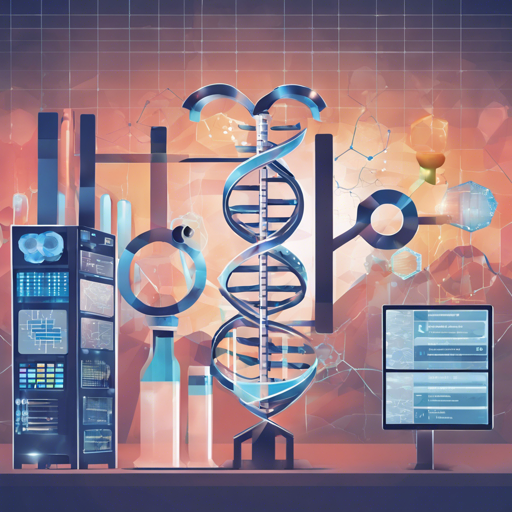Understanding the intricacies of DNA and genetics can be daunting. However, with powerful tools like the GROVER DNA language model, researchers can decipher the complexities of genomic sequences effectively. This blog walks you through how to set up and utilize this remarkable pre-trained model, designed to learn sequence context in the human genome.
Getting Started with GROVER
To dive into using GROVER, you will need to follow a few simple steps. These steps include importing the necessary modules and loading the model:
from transformers import AutoTokenizer, AutoModelForMaskedLM
# Import the tokenizer and the model
tokenizer = AutoTokenizer.from_pretrained("PoetschLab/GROVER")
model = AutoModelForMaskedLM.from_pretrained("PoetschLab/GROVER")Understanding the Code: A Garden Analogy
Imagine you have a beautiful garden (the human genome) that you want to explore. The AutoTokenizer acts like a skilled gardener who knows exactly how to prune the plants (DNA sequences) to facilitate better growth and visibility. On the other hand, the AutoModelForMaskedLM is akin to a botanist who uses the information gathered by the gardener to understand the plants better and predict which flowers (nucleotides) will bloom in the future.
Important Considerations for Sequence Analysis
When working with sequences in DNA analysis using GROVER, there are some critical points to keep in mind:
- Preliminary analysis reveals that re-tokenization of sequences using Byte Pair Encoding (BPE) has notable changes if the sequence is fewer than 50 nucleotides long.
- For sequences longer than 50 nucleotides, you should be cautious around the edges of the sequence.
- To ensure consistency in token representation, it is advisable to add 100 nucleotides to both the beginning and the end of your sequences.
Ensuring these practices will enhance the accuracy of your genomic analyses.
Accessing Tokenized Chromosomes
In addition to leveraging the GROVER model, you can utilize tokenized chromosomes available in the designated folder, which contain respective nucleotide mappers. These files provide valuable insights into how nucleotides are represented and can be utilized in conjunction with the GROVER model.
Troubleshooting Tips
If you encounter issues while working with the GROVER model, consider the following troubleshooting instructions:
- Ensure you have the correct version of the transformers library installed. You can update to the latest version using
pip install --upgrade transformers. - Double-check that your sequences are appropriately formatted before tokenization; incorrect formatting can lead to tokenization errors.
- If your analysis produces unexpected outputs, verify that the added nucleotides are included as instructed above.
For more insights, updates, or to collaborate on AI development projects, stay connected with fxis.ai.
At fxis.ai, we believe that such advancements are crucial for the future of AI, as they enable more comprehensive and effective solutions. Our team is continually exploring new methodologies to push the envelope in artificial intelligence, ensuring that our clients benefit from the latest technological innovations.
Citing the Work
If you wish to reference the work concerning the GROVER model in your studies, here is the BibTeX entry you can use:
@article{sanabria2024dna,
title={DNA language model GROVER learns sequence context in the human genome},
author={Sanabria, Melissa and Hirsch, Jonas and Joubert, Pierre M and Poetsch, Anna R},
journal={Nature Machine Intelligence},
pages={1--13},
year={2024},
publisher={Nature Publishing Group UK London}
}With this guide, you can confidently utilize the GROVER model to unravel the mysteries within genomic data!

